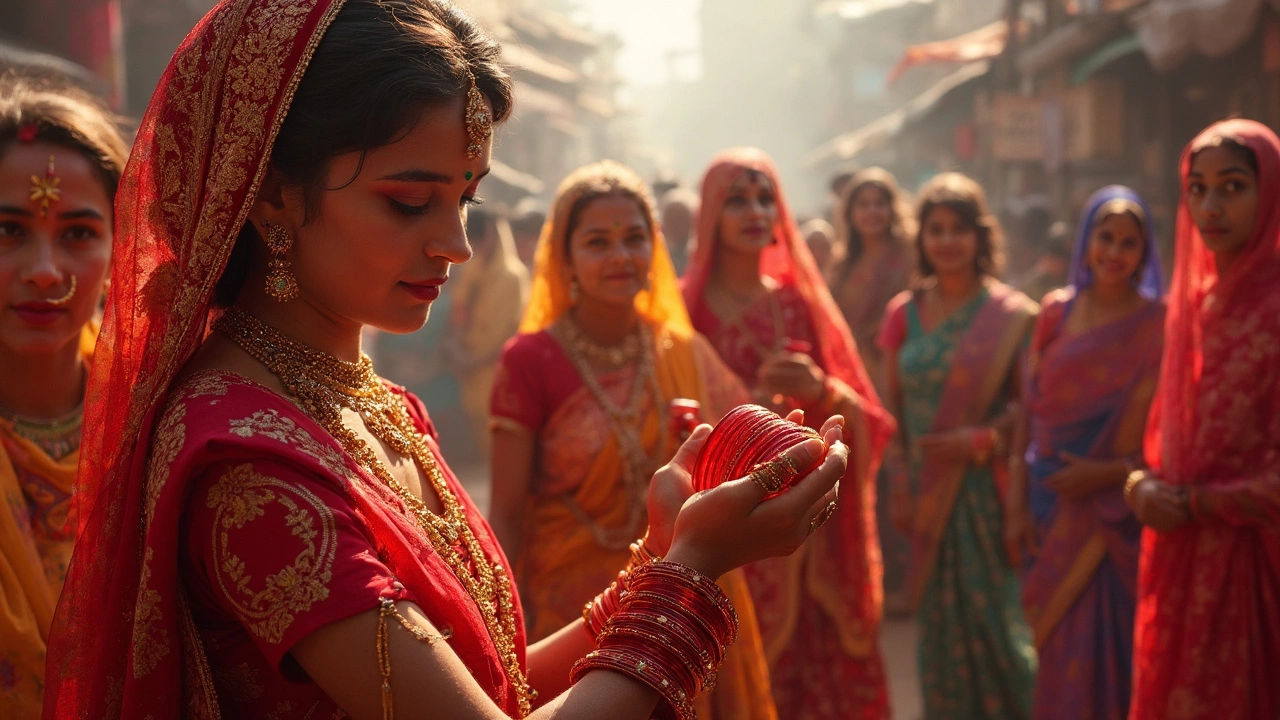Marriage Jewelry & Traditions – Indian Wedding Essentials
When we talk about Marriage, the legal and cultural union that brings two families together, especially in India, is marked by a rich set of rituals and symbols, one thing stands out: the jewelry. Every year, over ten million Indian weddings unfold, and each one showcases a handful of iconic pieces that tell a story of love, status, and heritage. These pieces aren’t just accessories; they’re a language that communicates commitment, family ties, and personal style. Below we’ll unpack the most talked‑about items, why they matter, and how they link to today’s modern couples.
Key Elements of Indian Wedding Jewelry
The Mangalsutra, a gold or gold‑plated necklace that the groom ties around the bride’s neck during the ceremony is perhaps the most recognizable symbol of marriage. It literally means “the sacred thread of the marriage,” and its design varies from simple gold strands to elaborate pieces studded with diamonds or kundan. The mangalsutra’s weight, gold purity (often 22K), and pendant style often reflect regional tastes—South Indian versions feature multiple strands, while North Indian designs may have a single bold pendant. Beyond aesthetics, the mangalsutra serves as a daily reminder of the marital bond and, in many cases, a financial safety net for the wife.
Another staple is the Choora, a set of red and ivory bangles worn by Punjabi brides for 40 days after the wedding. The choora tradition dates back centuries and is rooted in the belief that the bright colors ward off evil and bring prosperity. Typically, a bride receives 22 to 30 bangles, each representing a blessing for health, wealth, and fertility. Modern brides sometimes swap the traditional red for pastel hues or blend glass with metal, yet the ritual’s core purpose—to celebrate the bride’s new journey—remains unchanged.
Speaking of bangles, the broader category of Bangles, circular bracelets made of glass, metal, or crystal that signify marital status and are gifted by family members plays a versatile role across India. In many regions, a newly married woman receives a set of glass bangles from her mother‑in‑law as a sign of welcome. The number of bangles, their color, and material can hint at the family’s cultural background—golden bangles for South Indian weddings, lac bangles for Gujarati brides, and glass for North Indian ceremonies. Aside from symbolism, bangles often become heirlooms passed down through generations.
Beyond the three headline pieces, a wedding’s jewelry palette includes marriage‑specific accessories like nose pins, toe rings, and anklets. These items may seem minor, but they complete the visual narrative of the ceremony. For instance, the “Nath” nose ring is often paired with a delicate chain that connects it to the hair, signifying the bride’s readiness for married life. Each accessory, no matter how small, aligns with the larger cultural framework that marriage creates.
All these elements intertwine with broader wedding customs such as who gifts the mangalsutra, who ties it, and how families negotiate these traditions today. Modern couples sometimes split the cost, choose alternative gemstones, or even opt for a minimalist design that fits their lifestyle. Yet the underlying principle stays the same: jewelry acts as both a visual cue and a cultural contract, linking past and present.
Now that you have a clearer picture of the core pieces and their meanings, explore the detailed guides below. You’ll find answers on who traditionally buys the mangalsutra, how to pick the right gold purity, the etiquette around choora removal, and much more—each article dives deep into the nuances that shape Indian marriage jewelry today.
